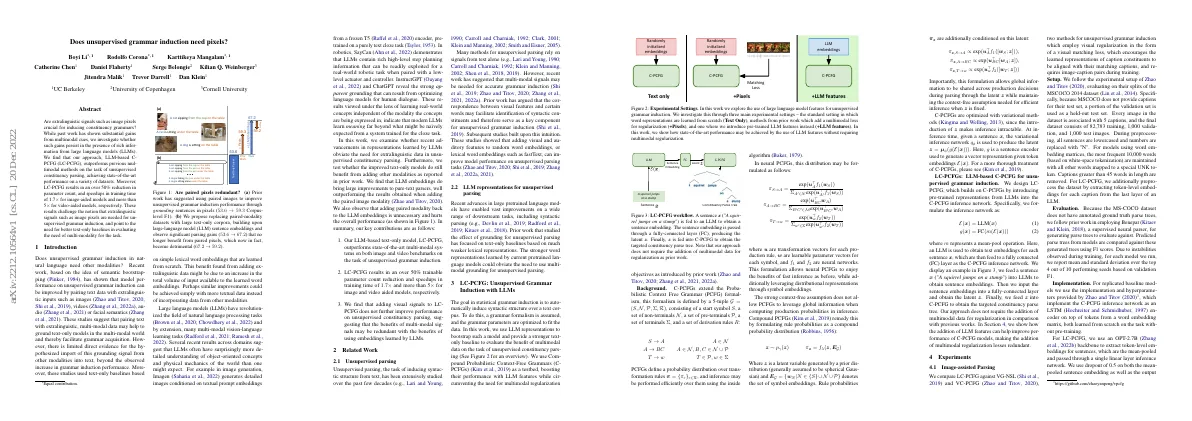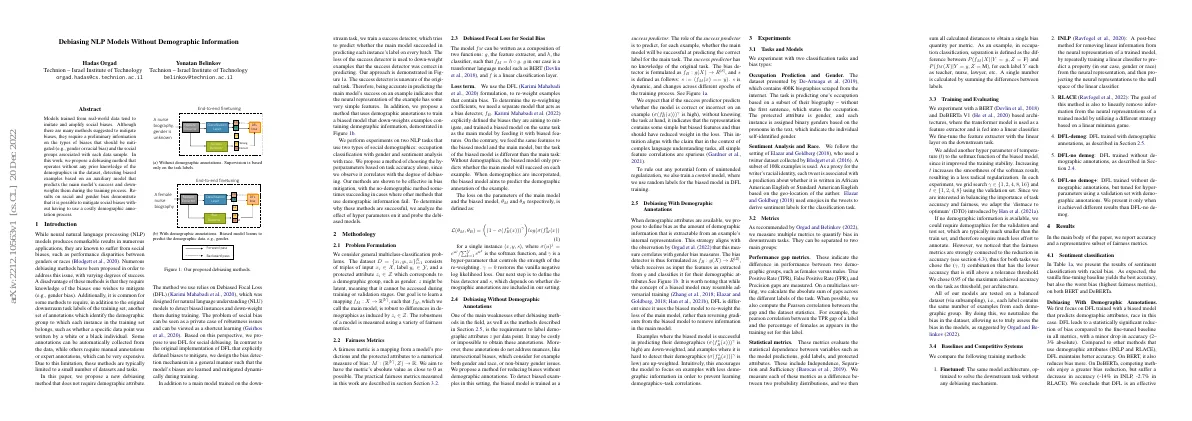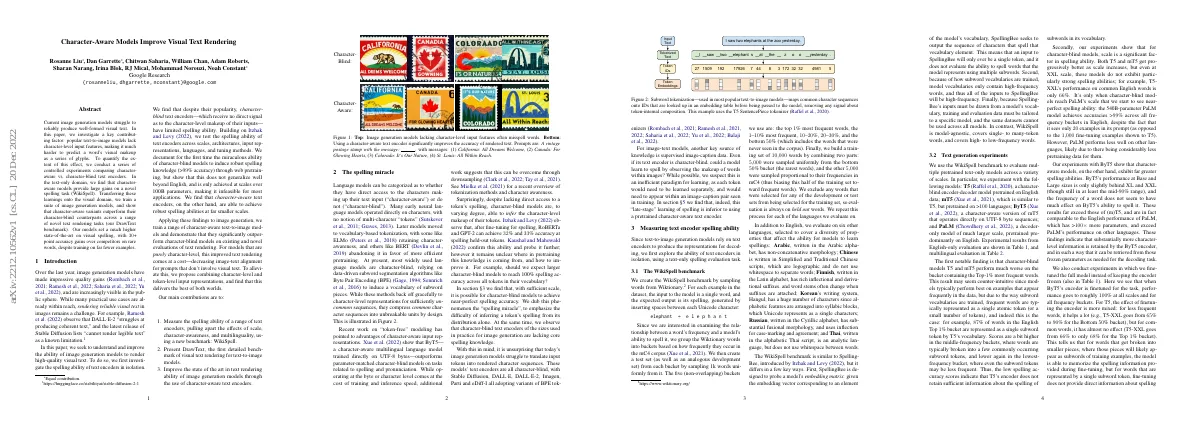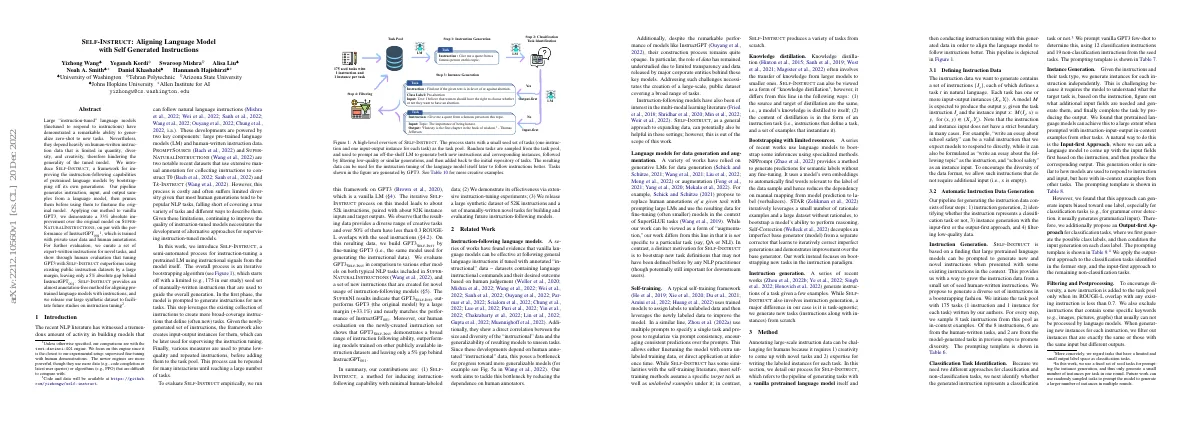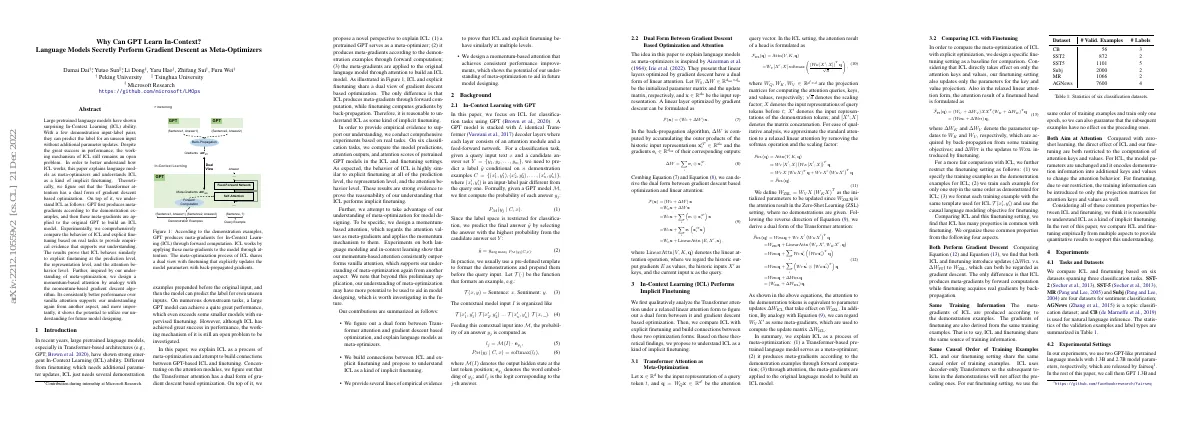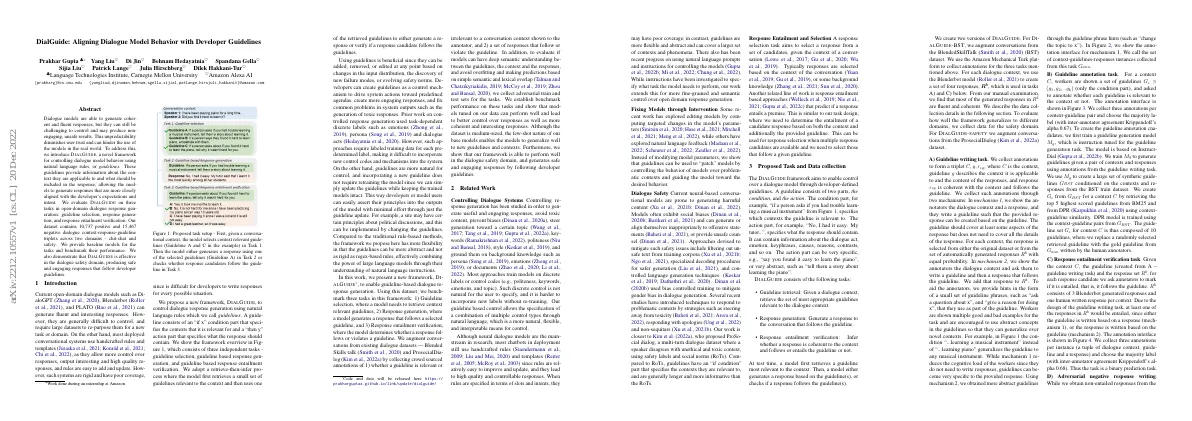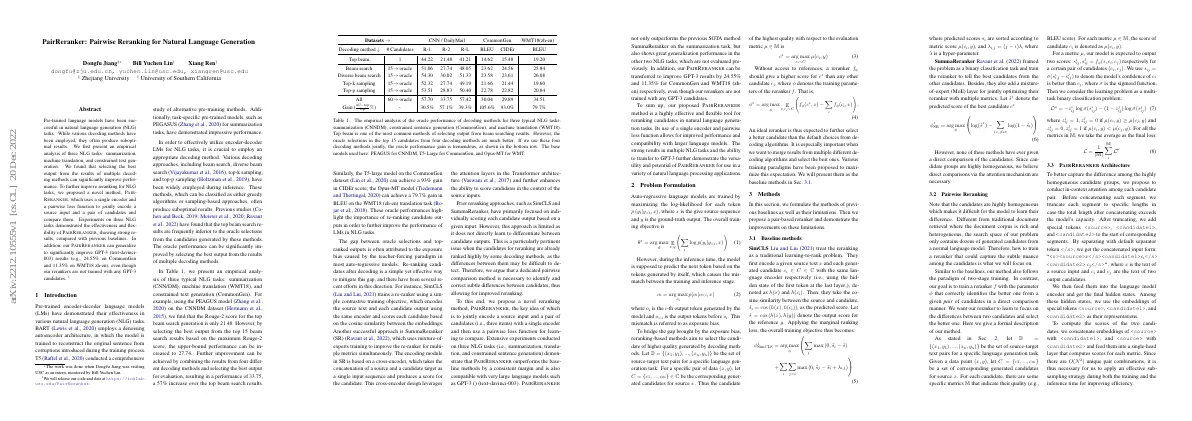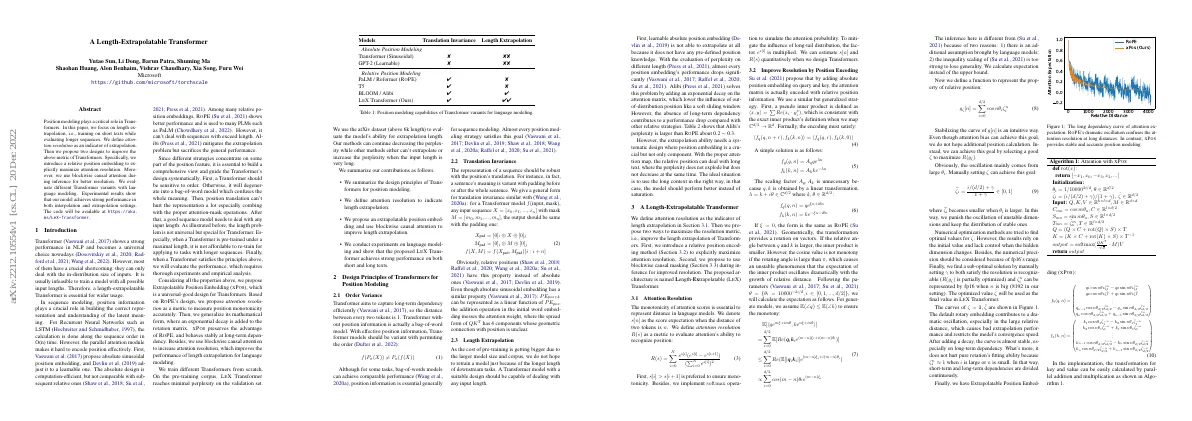Link to paper The full paper is available here.
You can also find the paper on PapersWithCode here.
Abstract Dialogue models can be difficult to control and may produce non-engaging, unsafe results. DialGuide is a framework for controlling dialogue model behavior using natural language rules. DialGuide is evaluated on three tasks in open-domain dialogue response generation. DialGuide is effective in the dialogue safety domain, producing safe and engaging responses. Paper Content Introduction Current open-domain dialogue models can generate fluent and interesting responses, but require large datasets to re-purpose them Most deployed conversational systems use handcrafted rules and templates Rigid and have poor coverage DIALGUIDE framework proposed to control dialogue response generation using natural language rules (guidelines) Guidelines consist of an “if x” condition and a “then y” action Retrieve-then-infer process used to retrieve relevant guidelines Guidelines can be added, removed, or edited at any point Prior work used task-dependent discrete labels, but difficult to incorporate new control codes Guidelines more natural for control, no need to retrain model DI-ALGUIDE framework proposed to enable guideline-based dialogue response generation Benchmark performance established on three tasks: guideline selection, response generation, and response entailment verification Models tuned on data can perform well and lead to better control over responses Related work Controlling dialogue systems has been studied to generate useful and engaging responses, avoid toxic content, and prevent biases Most approaches train models on discrete labels or control codes Our guideline based control allows the specification of a combination of multiple control types through natural language Neural dialogue models are the mainstream in research, but most chatbots in deployment still use handcrafted rules and templates Recent progress on using natural language prompts and instructions for controlling models Fixing models through intervention by computing targeted changes in the model’s parameters or natural language feedback Dialogue safety is an issue, approaches to mitigate include filtering out unsafe text, specialized decoding procedures, and controlled language generation techniques Response selection task aims to select a response from a set of candidates, given the context of a conversation Response entailment based approaches predict if a response entails a premise Proposed task and data collection Aim: Enable control over dialogue model through developer-defined guidelines Guidelines consist of two parts: condition and action Condition: Specifies which contexts the guideline is relevant to Action: Specifies what the response should contain Action can be specific or abstract DIALGUIDE consists of three tasks: guideline retrieval, response generation, response entailment verification Two versions of DIALGUIDE: BST and Safety BST: Annotations collected from Amazon Mechanical Turk Safety: Annotations collected from ProsocialDialog dataset Guideline writing task: Annotators write guidelines and responses that follow the guidelines Guideline annotation task: Annotators label guidelines as relevant or not to the context Response entailment verification task: Annotators mark if response follows the guideline or not Adversarial responses collected in verification task Dataset statistics in Tables 1 and 2 Experiments and results Conducted experiments on three tasks: guideline retrieval, response selection, and response entailment verification Results discussed in this section Guideline retrieval Generating a safe response based on a guideline and dialogue context Experiment on dev and test sets of DIALGUIDE-SAFETY Comparing DialBart0-noguideline, DialBart0-withguideline, DialBart-rot, OPT30B-fewshot, and DialBart-rot Evaluating generated responses with safety metric DialBart0-withguideline improves safety by 5% points DialBart-rot uses RoTs (rules of thumbs) Ablation experiments with No-guidelines and Safety-only baselines Response generation Models are trained with dialogue context and guideline as input and output response as output Ret-generate model retrieves guidelines in two steps and selects randomly from set with score greater than 98% Ret-robust model has additional instances with gold guideline replaced with random guideline for 20% of training data Evaluation reports Bleu-2,4 and RougeL scores, distinct-1,2, Gd-Bleu-2 and RS-entail Qualitative analysis Table 7 and 8 show sample inputs, guidelines and outputs from models for the Response generation experiment for DIALGUIDE-BST and DIALGUIDE-SAFETY Dialguide-tuned and OPT30B-fewshot use the gold guideline Multistep baseline generates its own guideline, and Ret-generate and Ret-robust use a retrieved guideline Dialguide-tuned follows the gold guideline and generates a safe response OPT30B-fewshot model output does not relate to the topic of the conversation Multistep baseline generates a guideline and response that focuses on the topic of the conversation Ret-generate response focuses too much on the provided guideline making the response somewhat incoherent Ret-robust is able to accommodate both the context and the guideline No-guideline model tuned on safety response data without guidelines generates a safe response Gold RoT is more generic compared to the guideline Dialguide-tuned shows the best performance in both results and qualitative analysis Retrieval baselines also show good performance and are more practical Multistep baseline is useful when no good guideline is available Conclusion DialGuide framework and dataset provide a solution for controlling dialogue model behavior using natural language rules....
